From place of worship to place of worship
A few days ago I was back in Lübeck and on my way to the St. Gertrud district. It is named after a late medieval plague cemetery and a chapel dedicated to St. Gertrude of Nivelles, a relative of Emperor Charlemagne. The cemetery and the chapel have long since disappeared. My destination was another place of worship: the temple of the Church of Latter-day Saints, also known as Mormons.
History and Genealogy
In the genealogy guild, the Mormons are best known as keepers of countless church records and other genealogical sources. Since the Mormons in Berlin had long had problems with access to these sources, I wanted to use the branch in Lübeck. But things turned out differently. St. Gertrud, by the way, was one of the three suburbs, i.e. secondary residential areas lying outside the walls to the old town, along with St. Jürgen and St. Lorenz. The great thing about a city like Lübeck is that you can still see pretty much exactly how it has grown historically. Despite World War II destruction and continuous building activity.
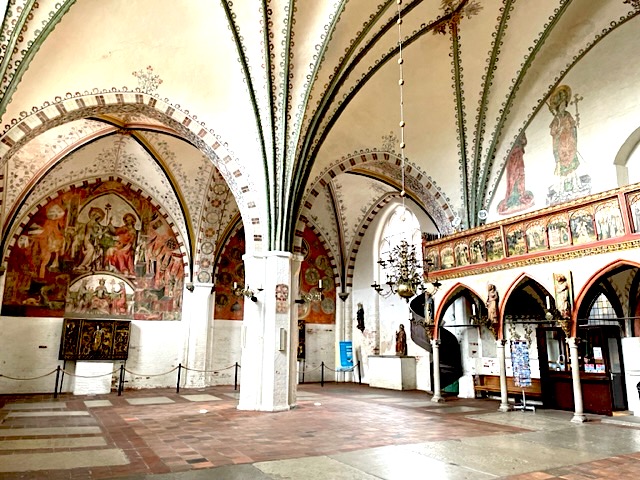
Through the Old Town
So I was on my way through the old town. I had entered it through the Holsten Gate, probably the most famous medieval city gate in Germany, and was walking along Königsstraße towards the Burgtor, through which I wanted to leave it again to get to the suburbs. I walked past the Katharineum, the grammar school for ancient languages that had moved into the buildings of the medieval Katharine monastery of the Franciscan order after the Reformation. Pupils occupied the entire pavement after their school-leaving exams and played beer ball.
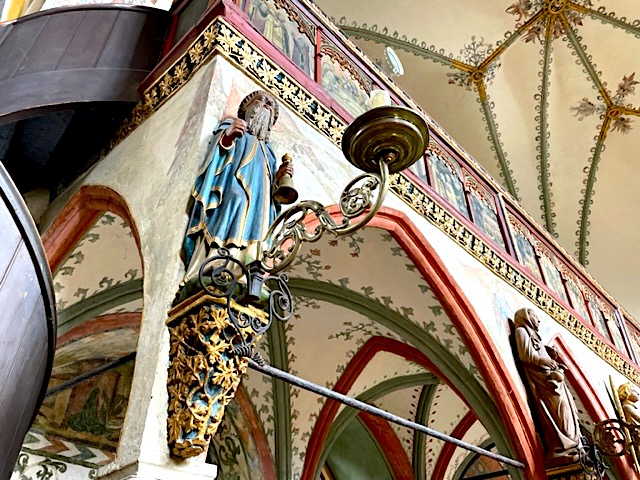
Castle and Monastery
Then I already had the castle gate in front of me in view. A castle belongs to the castle gate, you might think. That’s not entirely wrong: in the north-western corner of the old town there was an ancient Slavic castle site. However, the medieval castle was demolished in 1226, and the castle gate was not built until 200 years later. At that time, a monastery had already taken the place of the castle: The Castle-Monastery. It was dedicated to St. Mary Magdalene and was home to Dominican monks.

Monks for the Poor
The Franciscans and the Dominicans: unlike the Benedictines, for example, these two spiritual orders did not seek seclusion to pray and work, but found their vocation in caring for others and therefore settled in towns. Lübeck was therefore nothing special in this respect.
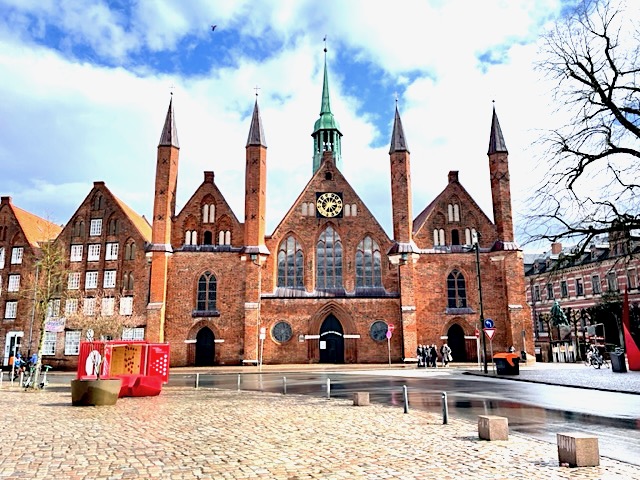
The Lübecker Extra
But then I virtually stumbled into a Lübeck extra. The occasion was a huge rain shower. Sun and dark clouds alternated, April weather. So I was glad to find an open door at the right moment to protect myself from the cold wet. Moreover, this door led into a historic building.
After entering, I rubbed my eyes: I was standing in a church-like Gothic hall with stained glass windows and large-scale medieval murals. But this was obviously not a church, at least not an ordinary church. I crossed the hall and went through a doorway, behind which I assumed the nave. High and long, the space behind the vestibule was indeed, but built up with shallow numbered wooden chambers, each only about two by two metres in area. The art historian in me was at a loss.
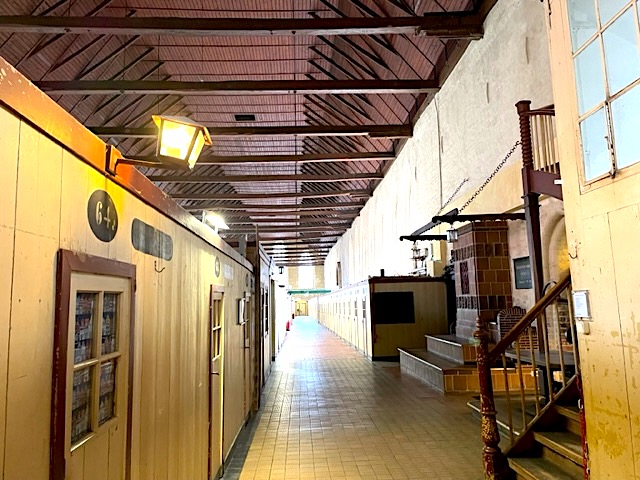
In the Old People’s Home
At least I was right in my dating: the stone walls were 13th/14th century, the wooden walls 19th century. And of course I didn’t remain ignorant for long thanks to the information boards in the building. However, I could or should have heard beforehand that it is a unique institution and widely known Lübeck sight. After all, the Holy Spirit Hospital is the longest-running old people’s and nursing home in the world, from its foundation in 1227 to the present day. This tradition could end this year, because Lübeck’s city hall says that the necessary renovation of the facility is “not economically feasible”. The dispute is currently running at the highest political level, outcome: uncertain.
The Genealogy of Geriatric Care
Of course, a lot has changed in the last 800 years when it comes to caring for the elderly. In the beginning, the residents slept in long rows of beds and lived according to strict rules, similar to monks and nuns. With the Reformation, the hospital became a secular institution. From the 17th century onwards, everyone had a warm bath eight times a year. Privacy, on the other hand, only arrived in the 19th century: around 1820, the wooden chambers were built that can still be seen today. By the way, they are open at the top and remind me of emergency accommodation for refugees in large halls like Berlin-Tempelhof Airport.

Full of Life
Accordingly, things must have been lively here in the past, not until sometime long before our time, but until 1970, the year I was born. Until 1970, the small wooden chambers were inhabited and life took place in the corridors of the old people’s home, with a library and a pharmacy. A look into one of the chambers and old photos give an impression of this life. Today, however, the residents live in outbuildings and the main building has the character of a museum. And in the vestibule, a detailed model shows what it might once have looked like in and around the hospital.
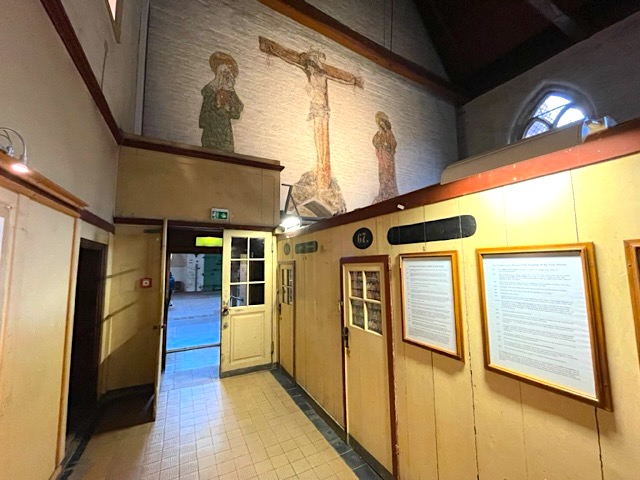
And my Genealogy at the Mormons?
Nothing. After the rain shower, I continued my way through the castle gate to St. Gertrud and was met in front of the temple by two young missionaries of the church: Unfortunately, they had given me the wrong information on the phone: the research centre with the church records was not accessible today after all, but only after prior consultation with its director. So I had to do without the spiritual contemplation in the context of my work on that day. I was all the more grateful for the unexpected weather-related stopover at the Holy Spirit Hospital. There I not only learned a lot, but also experienced moments of spiritual contemplation.

See also this blog post about Lübeck: First time. Research in Lübeck
Website of the Foundation: Heiligen-Geist-Hospital
